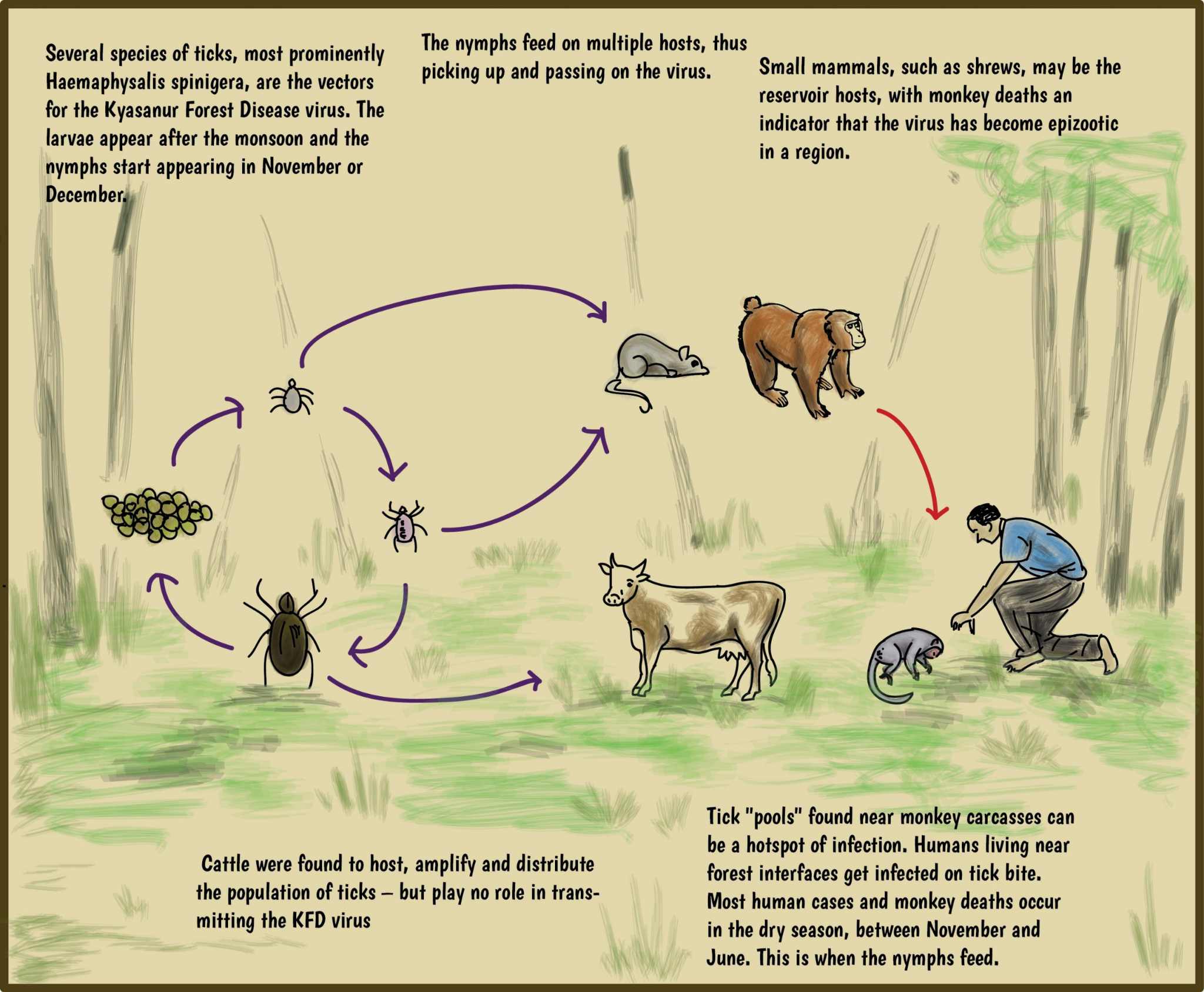Kyasanur Forest Disease | 12 Feb 2024
Why in News?
Since the beginning of 2024, two individuals have lost their lives due to Kyasanur Forest Disease (KFD), a viral infection prevalent in Karnataka.
- The number of deaths reported due to the disease since 1956, when it was noticed in the forests of Shivamogga district, is above 560.
What is Kyasanur Forest Disease (KFD)?
- About:
- Kyasanur Forest Disease (KFD), a zoonotic illness, is colloquially referred to as “monkey disease” due to its link with monkey fatalities.
- It is caused by the Kyasanur Forest disease Virus (KFDV), which primarily affects humans and monkeys.
- It was first identified in 1957 in a sick monkey from the Kyasanur Forest in Karnataka. Since then, between 400-500 human cases per year have been reported.
- Eventually, KFD emerged as a grave public health problem spreading through the entire Western Ghats.
- Transmission:
- In nature, the virus is maintained mainly in hard ticks (Haemaphysalis spinigera), monkeys, rodents, and birds.
- To humans, it may occur after a tick bite or contact with an infected animal (a sick or recently dead monkey).
- Occurrence:
- Normally, the transmission begins from late November to June and peaks between December and March.
- Symptoms:
- Characterized by chills, frontal headache, body ache, and high fever for five to 12 days with a case fatality rate of 3 to 5%.
- Diagnosis:
- Diagnosis can be made in the early stage of illness by molecular detection by polymerase chain reaction(PCR) or virus isolation from blood.
- Later, serologic testing using Enzyme-linked Immunosorbent Serologic Assay (ELISA) can be performed.
- Treatment and Prevention:
- Doctors manage symptoms and monitor vitals daily, in the absence of any specific treatment.
- Patients are receiving free treatment as per the State Government's decision.
- A vaccine (Formalin inactivated KFDV vaccine) does exist for KFD and is used in endemic areas of India.
- However, the Indian Council of Medical Research (ICMR) is said to be in consultation with Indian Immunologicals for the development of a vaccine.
- The forest department is distributing (N, N-diethyl phenylacetamide) DEPA oil, to be applied to exposed skin which acts as a tick repellent.
- Doctors manage symptoms and monitor vitals daily, in the absence of any specific treatment.
Kyasanur Forest
- The Kyasanur Forest is a protected area located in the Shimoga district of Karnataka.
- It is part of the Western Ghats mountain range and is known for its rich biodiversity.
- The forest is home to a variety of plants and animals, including tigers, leopards, elephants, and gaur.
UPSC Civil Services Examination, Previous Year Questions (PYQs)
Prelims:
Q. Consider the following: (2018)
- Birds
- Dust blowing
- Rain
- Wind blowing
Which of the above spreads plant diseases?
(a) 1 and 3 only
(b) 3 and 4 only
(c) 1, 2 and 4 only
(d) 1, 2, 3 and 4
Ans: D

